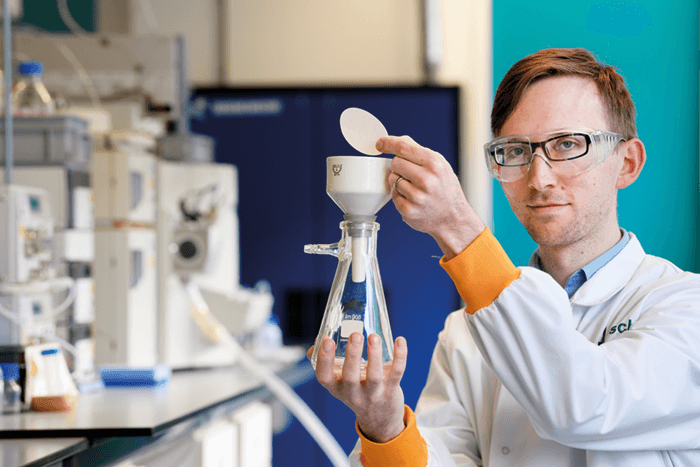The action of breast cancer drug Tamoxifen is mediated not by the drug itself but by its metabolite, Z-endoxifen. The body’s ability to convert the drug varies between patients because of genetic differences in enzyme production. Administering Z-endoxifen directly would remove this variability, but, until now, synthesis of the drug has been prohibitively expensive. Now, researchers from Eindhoven University of Technology, Syncom BV and the Antoni van Leeuwenhoek hospital in the Netherlands have found an inexpensive way to produce Z-endoxifen directly – using only a simple paper filter similar to those used for making coffee to isolate the pure drug.
The development has been some years in the making. “In 2011, Jos Beijnen (Netherlands Cancer Institute) asked us if we would be willing to synthesize a gram of Z-endoxifen for his research group, which is looking into the pharmacology of different tamoxifen metabolites (among them Z-endoxifen). At the time, Z-endoxifen was hypothesized to be the active form of tamoxifen and its efficacy in clinical trials had not yet been shown,” says British-born Lech Milroy, Assistant Professor at Eindhoven University. “As part of her Bachelor’s project, Daphne van Scheppingen and I produced milligram quantities of the Z-endoxifen as a 95/5 mixture of Z/E isomers using an optimized route.” Beijnen then contracted out the synthesis to coauthors Syncom (1), where further optimization work was performed by Bartjan Koning to increase the safety and scalability of the synthesis, ultimately enabling production of the drug on a multi-gram scale, in a single batch and with higher purity.

So how did they filter this special “brew”? By carefully controlling the work-up and purification conditions (including changing the pH of the separating medium) and replacing expensive preparative HPLC with trituration and paper filtration (see picture) at the last step, the Eindhoven team managed to simplify the separation of pure Z-endoxifen from the undesired E-alkene isomer. They also increased the stereoselectivity and further improved the reaction conditions and safety of the synthesis, allowing them to raise the overall yield of Z-endoxifen to 37 g in a single batch – a significant improvement on the 200 mg delivered after preparative reverse-phased HPLC reported in previous literature. “Our synthesis relieved a significant bottleneck in the process, enabling straightforward access to multi-gram – in other words, scalable – quantities,” says Milroy. TU/Eindhoven and Syncom’s work has made Z-endoxifen more synthetically accessible to pharmacology groups. Says Milroy, “The mission now is to replace tamoxifen with Z-endoxifen in the clinic for the treatment of breast cancer.”
References
- L-G Milroy et al., “A multi-gram-scale stereoselective synthesis of Z-endoxifen”, Bioorganic Med Chem Lett, 28, 1352–1356 (2018).




